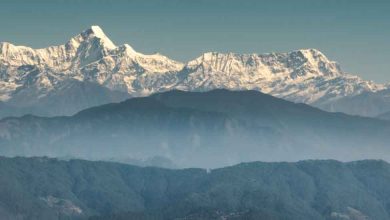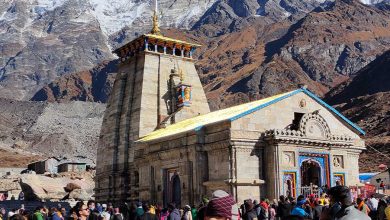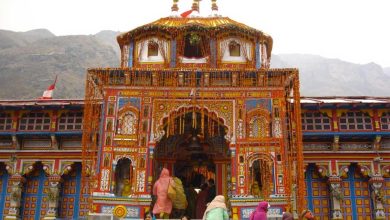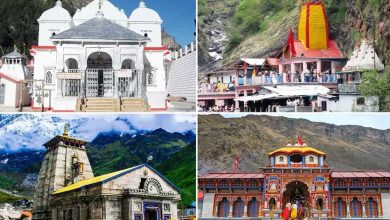What makes a traveller alive is the mesmerising view of the unknown panoramic bliss. Something that you might not have seen can fascinate you like never before. Just as every wanderer dreams of the next destination, if the Valley of Flowers trek in Uttarakhand is what you dream of, get ready for it! With a plethora of treks in India, there is something extraordinary about this one.
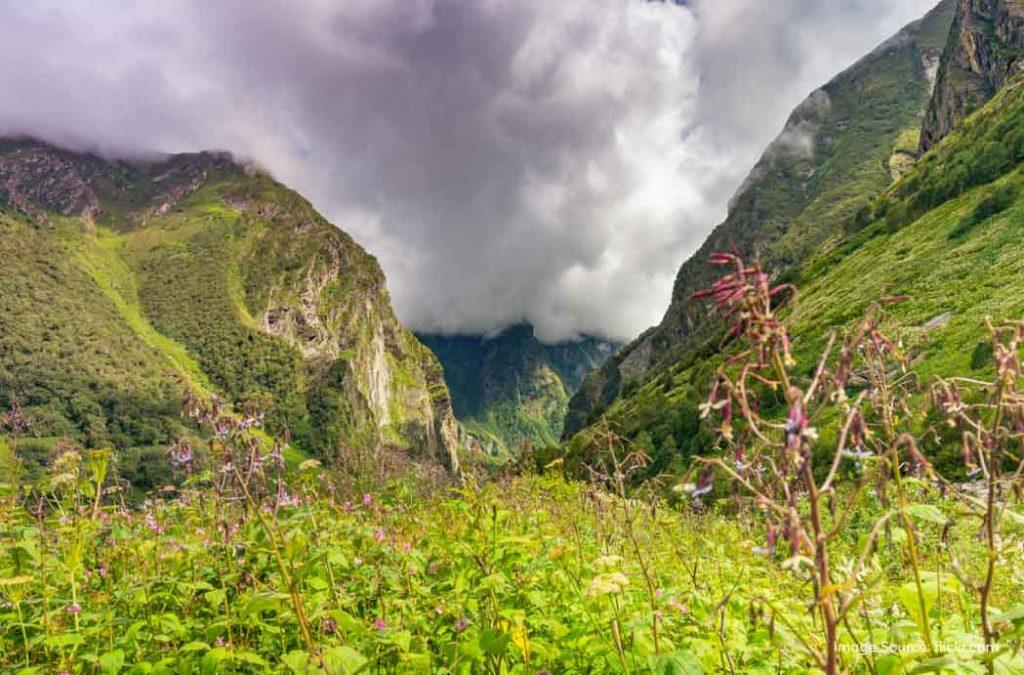
As you dive into nature’s vivid palette, the Valley of Flowers takes you deeper into the world of beauty. Situated high in the Himalayas, it is a UNESCO World Heritage Site! The trek is specifically known for its sprawling meadows. As the name suggests, know that you have to walk across multiple blankets of wildflowers.
To accompany you are the snow-clad peaks in the backdrop! It is the gentle tranquillity wrapped in a moderately challenging trek that captivates the soul. If you are up for an energising time amidst natural bliss, this might be for you. So, let’s discover details and the Valley of Flowers trek route for better understanding.




History and Mythologies Surrounding the Valley of Flowers
Wondering how the Valley of Flowers was ever discovered? It was simply a fluke. It was in 1932 when a British mountaineer named Frank Smythe went on an expedition on Mt. Kamet with his team. After losing his way, he suddenly found himself amidst the blooming flowers.
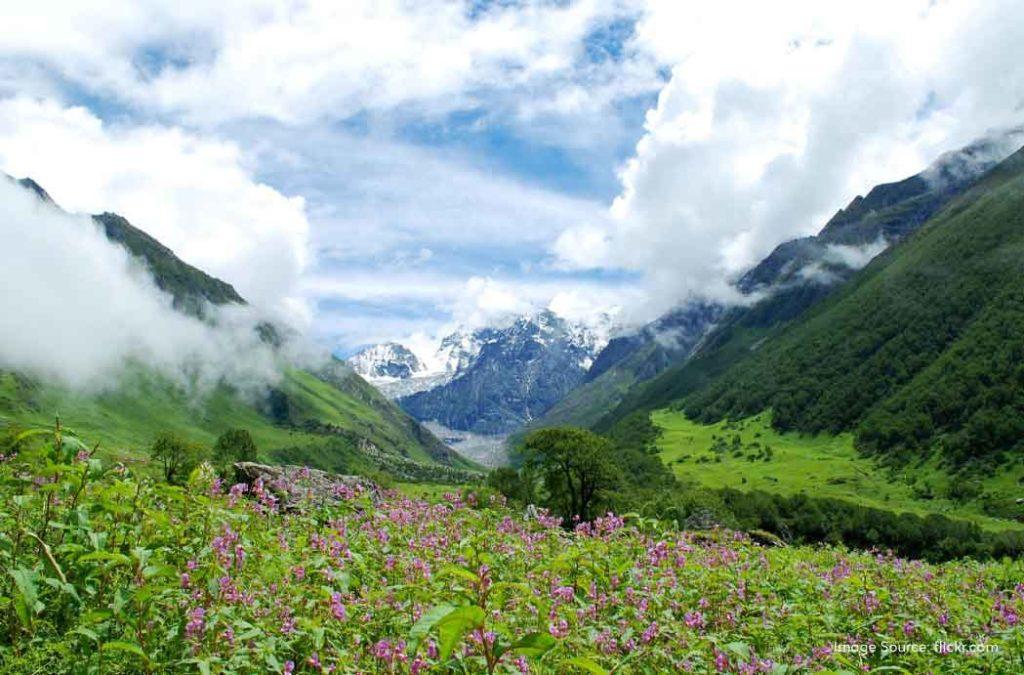
Astonished by its beauty, he mentioned the destination in his book Valley of Flowers. Immediately after it was published, the valley received global recognition and invited mountaineers from all over the world. Later, it was declared a national park and received the UNESCO remark for its beauty.
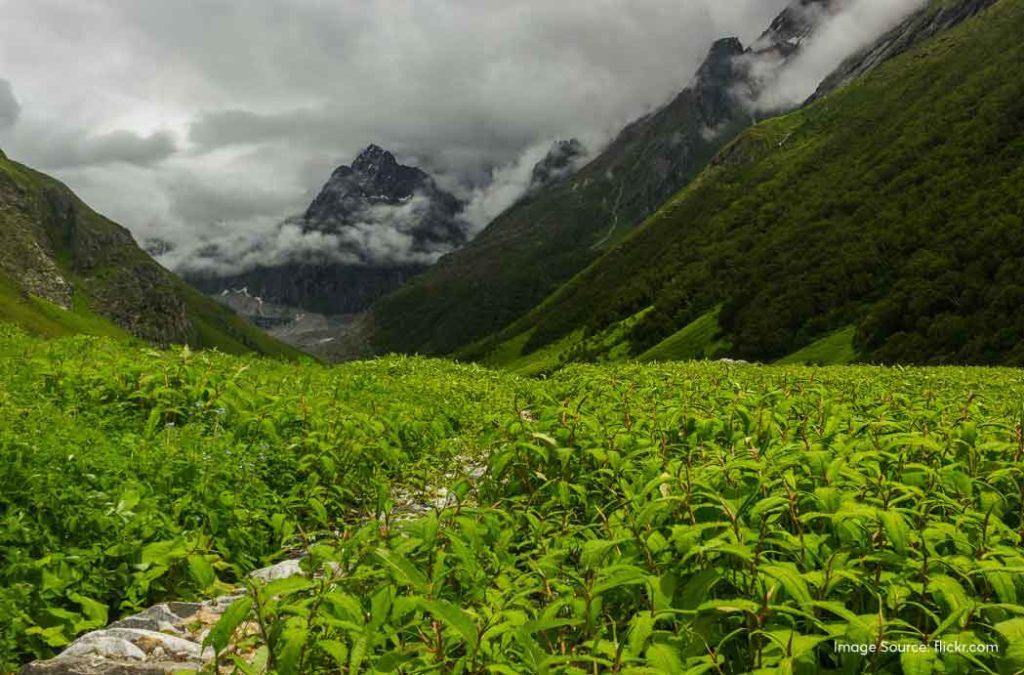
Before the discovey, the local lore suggested that the valley was the place of fairies. It was also believed that no one should ever cross the valley and simply enjoy up to a certain extent. Locals believed that the valley had supernatural powers. Anyone who crosses the valley enters another world, and there is no way to return. Well, you never know if fairies might be waiting to host you!
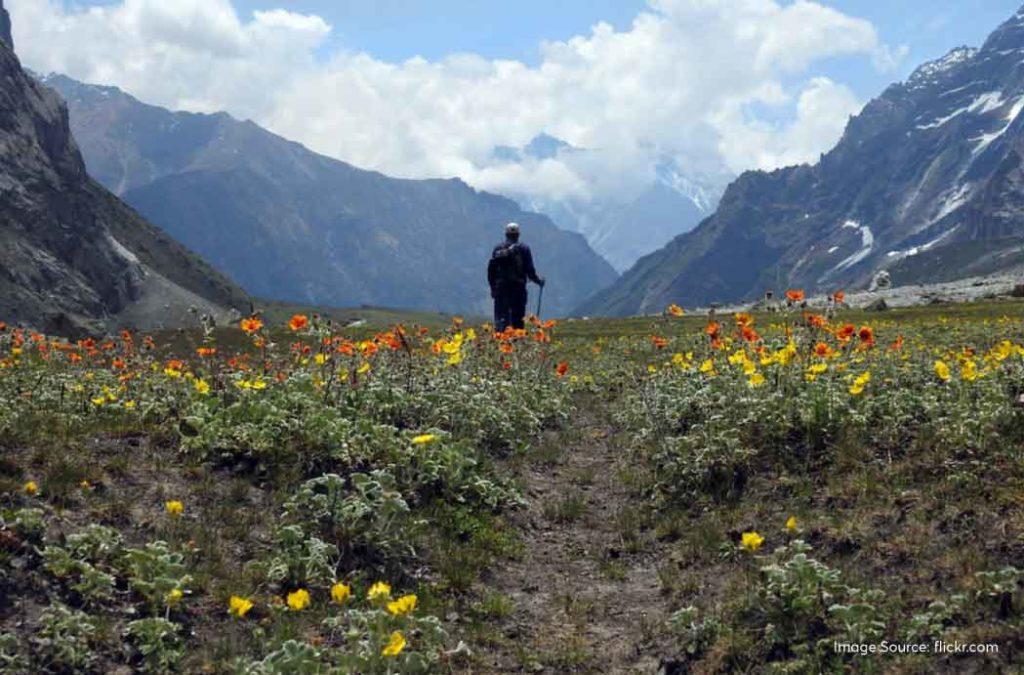
From mountain passes in India to the convergence of rivers, you are certain to come across intriguing mythological narratives. Valley of Flowers is no different from this phenomenon! As good as it is in the eyes of nature lovers, it also attracts various mythology enthusiasts.
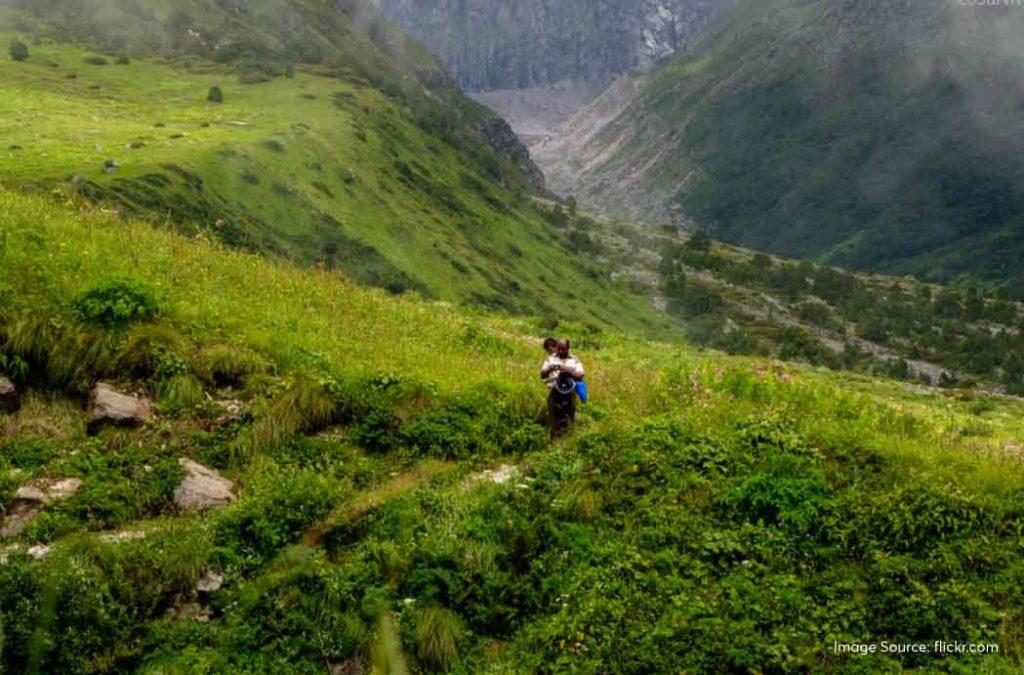
According to the legend, Lord Hanuman visited this region in search of the magical herb Sanjivani. It was needed to save Lord Lakshman’s life; however, he could not find it. As per the epic Ramayana, Lord Hanuman picked up the entire mountain. That is exactly why the valley is considered pristine. While mythologies and local lore intrigue you, you can only find out more when you actually visit the place.
Valley of Flowers Trek Route: Traversing at an Elevation of 14,000 Feet
Valley of Flowers National Park is spread across massive land, making it easy for you to reach from different routes. Trekkers choose routes depending on the location and travel preferences. However, the below-mentioned route can be considered for your trekking expedition here.
Day 1: Haridwar to Joshimath
Your journey begins in the sacred city of Haridwar. Many travellers also begin the trek from Rishikesh. So, choose the route that is comfortable for you. Without wasting time, head to Joshimath. It takes around 9 to 10 hours, so you must be prepared for a long drive.
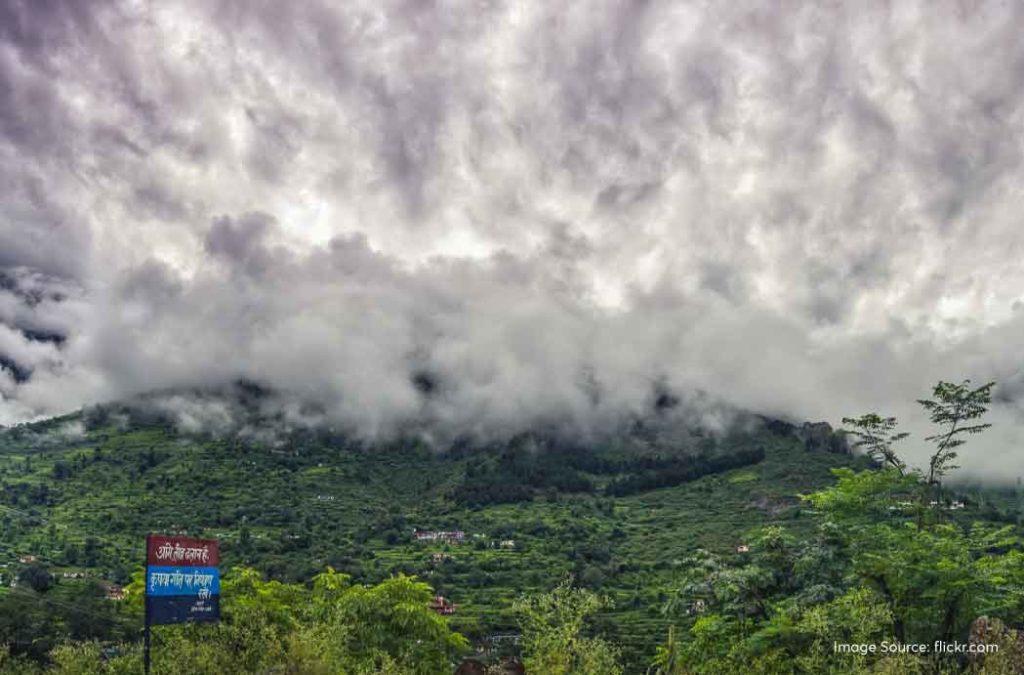
However, the views are totally worth the wait! The trail passes through Devprayag, Rudraprayag and Karnaprayag. Joshimath is the last destination to find ATM service, so withdraw the required cash for the expedition.
Day 2: Joshimath to Govindghat – Trek to Ghangaria
Govindghat is the very first point of the Valley of Flowers trek. You need to drive around 22 kilometres from Joshimath to reach the destination. After reaching, the journey begins from the village of Pulna. What makes it amazing is the motorable mountain pass that cuts time and distance during the hike.
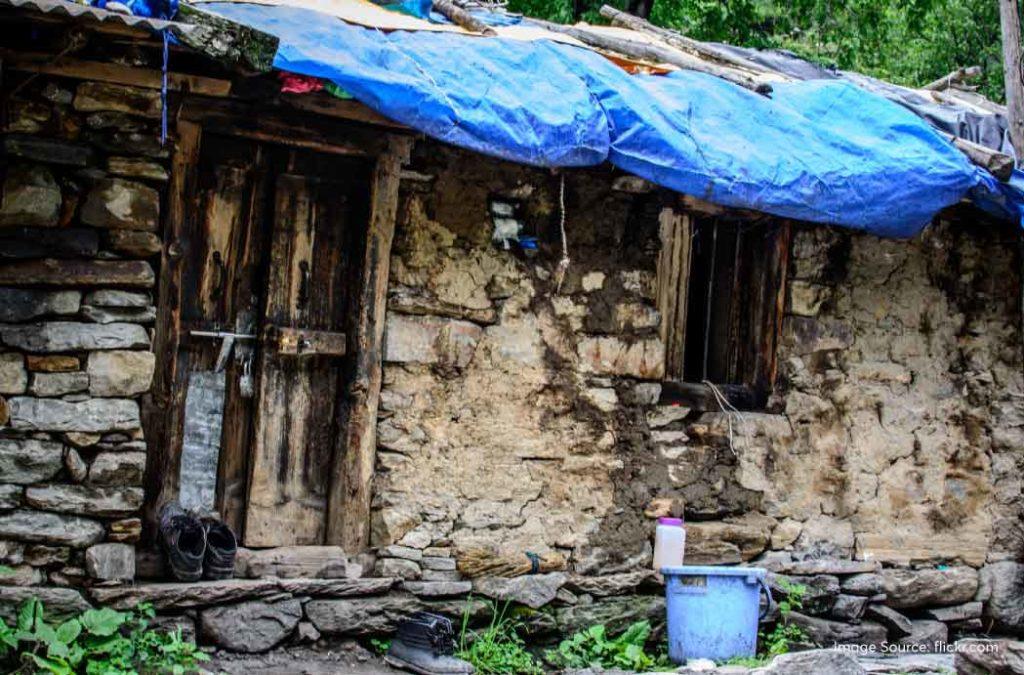
Pulna is a small village located in the Himalayan range of Uttarakhand. It introduces you to the simplicity of village life. Moreover, you can spot many stone houses and narrow pathways on your way. The inspiring backdrop of towering mountains creates a perfect setting to click Instagram-worthy pictures. Not to forget to witness dense forests and blooming rhododendrons.
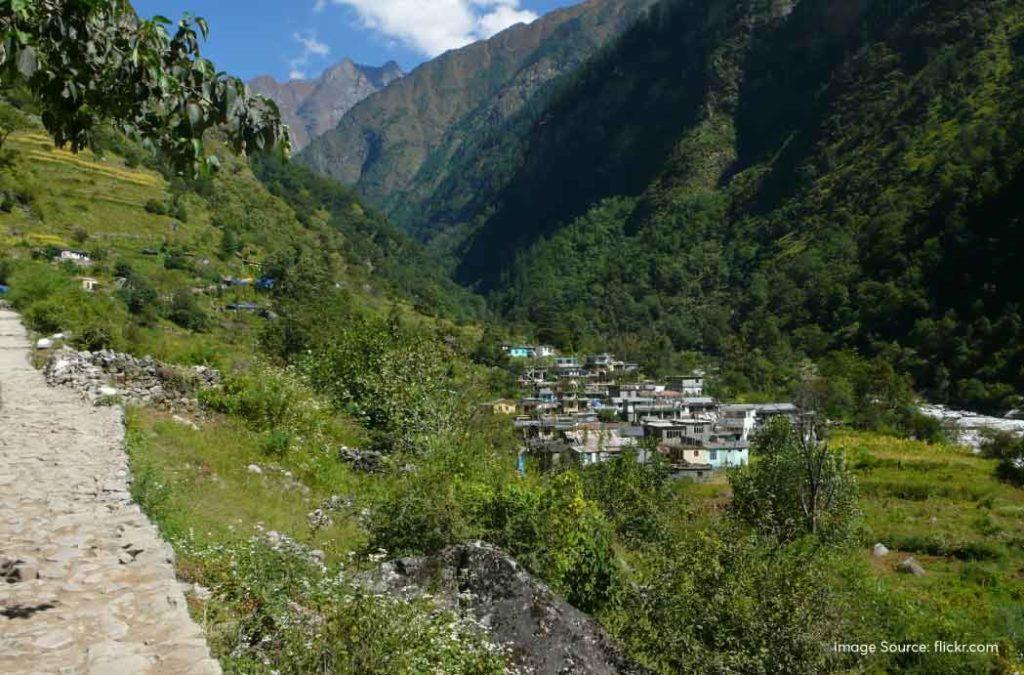
The trail for Pulna is a lot steeper than expected as you move towards higher altitudes. It is literally like zigzagging through Bhyundar Valley, making it adventurous for you. The trail is known for lush greenery along with cascading waterfalls on your way. Rhododendrons keep adding a splash of colour, making you click multiple pictures of the idyllic views.
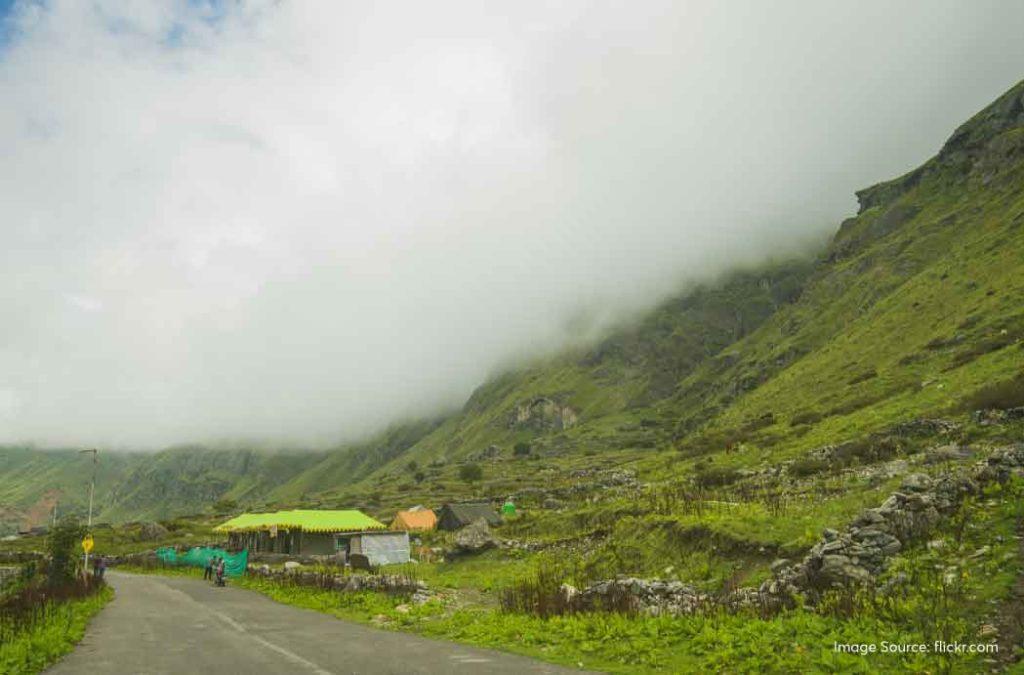
It takes around 6 to 7 hours to reach the Ghangaria base camp. Ghangaria is the last inhabited village on your trail to the valley. It promotes rural tourism in the village as more and more travellers experience a rustic lifestyle. After you reach the base camp, it is time for a good rest before you head for the Valley of Flowers trek the next day.
Day 3: Ghangaria to Valley of Flowers
The journey from Ghangaria to the Valley of Flowers is approximately 4 kilometres. The scenic trail takes you through dense forests. You literally get to see all the hues of green dancing to the rhythm of nature. The jungle trail continues before opening to the expansive, flower-covered meadows.
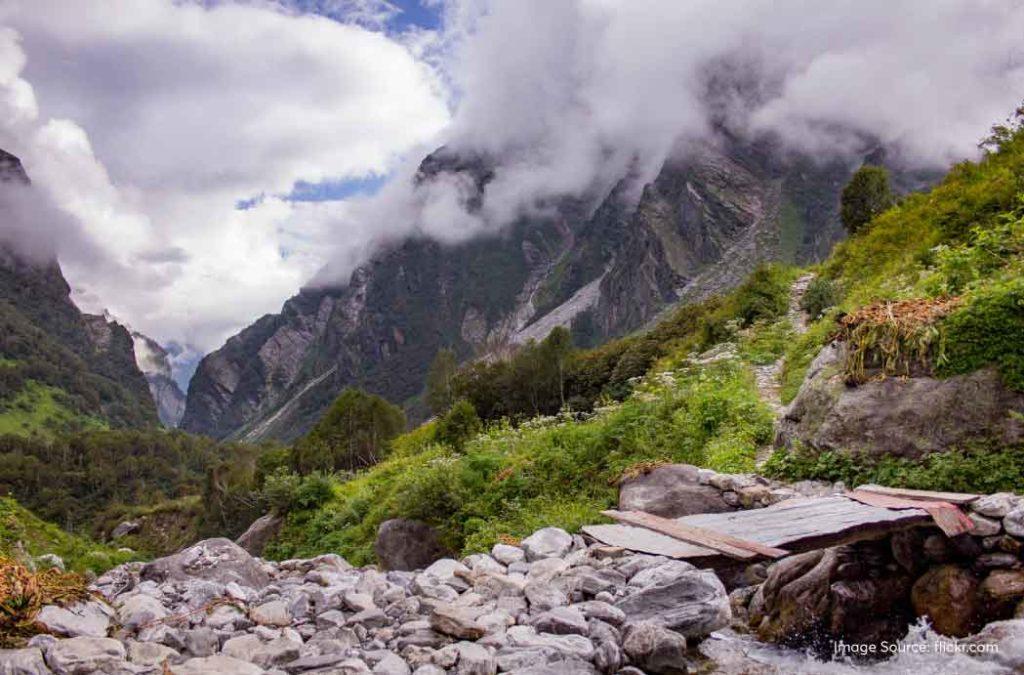
After around 3 to 4 hours of traversing through the rhododendrons and different landscapes, you finally reach the Valley of Flowers. Known for hundreds of wildflowers, you can spot rare species like the blue poppy and cobra lily. What’s more? The valley is surrounded by towering snow-clad peaks, creating a breathtaking panorama.
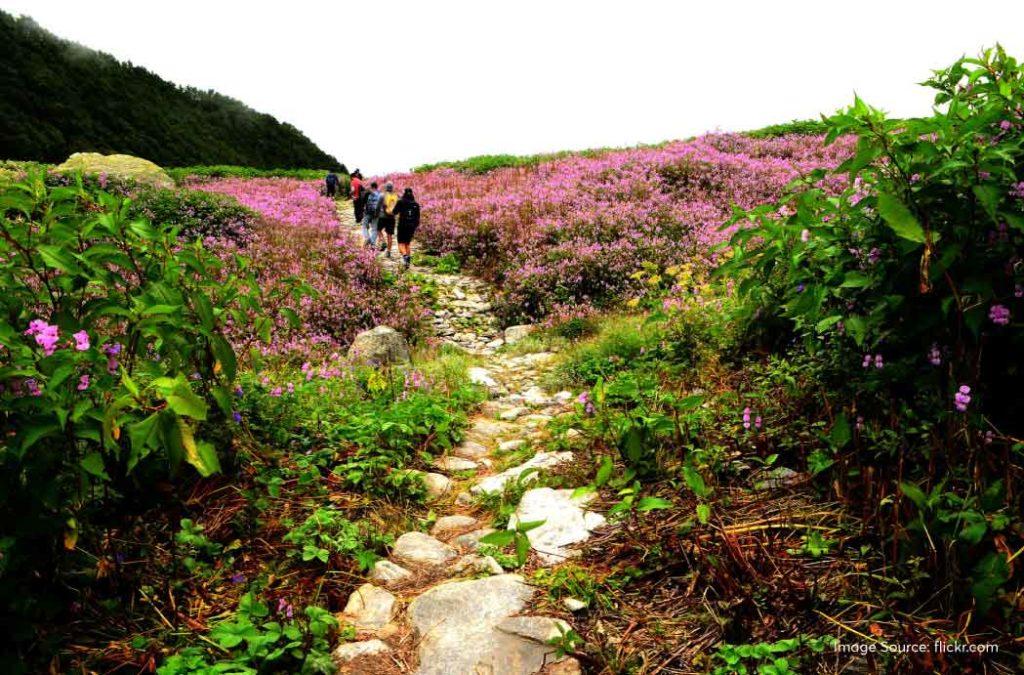
Being one of the heartwarming valleys in India, it offers an unforgettable trekking expedition. Now is the time to spend hours on your destination. You can click endless pictures, walk through the valley, watch wildflowers, and definitely celebrate the achievement.
After conquering the destination you always wanted, you have the option to opt for Hemkund Sahib. It is a famous gurudwara located at the highest altitude. If you wish to visit there to seek blessings, the trek from Ghangaria is around 6 kilometres. Many travellers love to embrace spiritual bliss. So, if you wish to do that, get ready for another wonderful hike.
Valleys of Flowers Trek: Witnessing the Floral Heritage
Valley of Flowers Trek is specifically for adventure seekers as well as nature lovers. It literally looks out of the world, as you can spot flowers in vibrant hues. The valley is home to 400+ flowering plants. Some of the species, like the Brahma Kamal, Blue Poppy and Cobra Lily, are particularly famous in the region. Nothing is better than watching hundreds of tiny flowers against the backdrop of gigantic mountains.
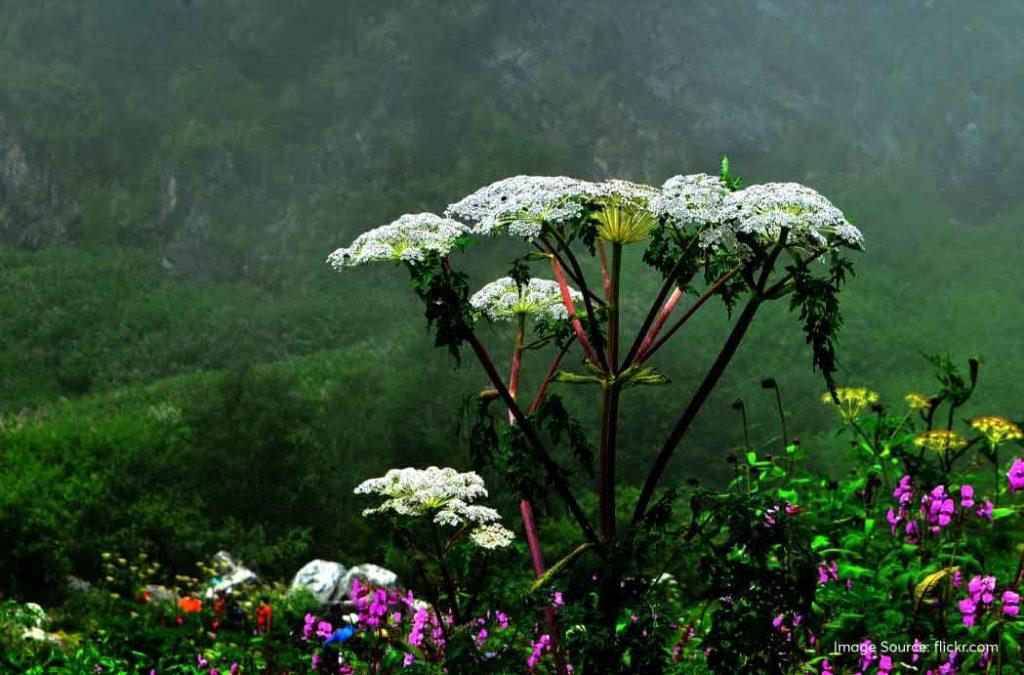
Additionally, you can also see diverse flora, including alpine flowers like asters, anemones, calendulas, daisies, orchids and primulas. Every few steps reveal new combinations of colour and texture in the kind of flowers you see. While some fragrances captivate you, others might astonish you with their magic creation.
Into the Wild: Jungle Surprises on Your Trek
The Valley of Flowers trekking is not just about the floral beauty and witnessing the majestic mountains. There is so much more to it as it holds the title of being a national park! Located at a whopping altitude, the valley creates a heavenly space for many species. It is home to a plethora of rare as well as endangered animal species.
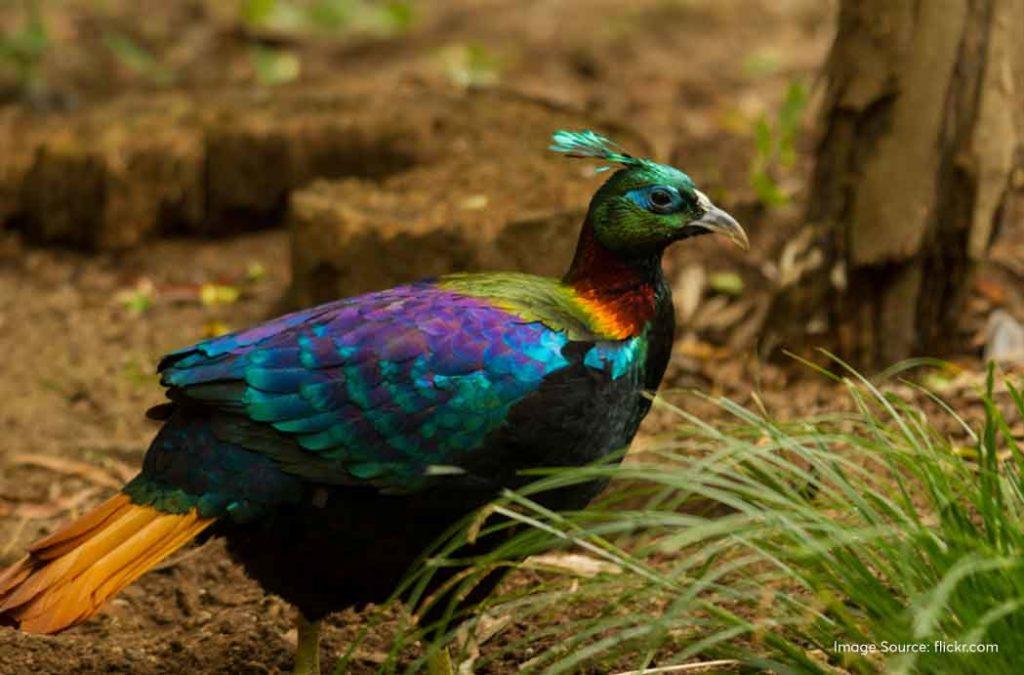
According to the findings, few animals have been spotted in the designated area. If you are lucky, you might be able to spot grey langurs, Himalayan black bears, and the Himalayan Musk deer. Even flying squirrels and red foxes reside in this beautiful valley.
You can also spot different birds, including the Himalayan Monal Pheasant and Yellow-Billed Chough. If you are enthusiastic about bird watching, do carry binoculars on your expedition. You are certain to meet different wild bees and butterflies making their way to these flowers.
Food and Accommodation Facilities
The trek is approachable from various cities so you can book hotels in Haridwar, hotels in Dehradun or budget-friendly hotels in Rishikesh before the expedition. The Valley of Flowers trek is pretty popular for first-time as well as seasoned trekkers. Hence, you can find all the basic facilities required for a joyful time. Govindghat is the place to find a range of accommodation options. You can easily opt for cottages, guesthouses, or homestays available at different budgets.
Even Ghangaria has many accommodation options, including trekking lodges and guesthouses. These are some simple rooms that provide basic comfort. Some agencies also offer tented accommodations if you travel with a company.
Food is not a problem during the trek, as you shall find good options in Ghangaria and Govindghat. However, expect basic meals such as dal, rice, chapati and seasonal vegetables. At times, trekking companies also arrange cooked meals in the lodges.
Best Time To Do Valley of Flowers Trek
Unlike other trekking destinations in Himachal Pradesh, the Valley of Flowers trek is a little different. It is because the valley is open only from the months of June to October when the bloom is at its highest peak. However, the best time to visit the valley is between July and September. These are the ideal months to witness the most number of flowers.
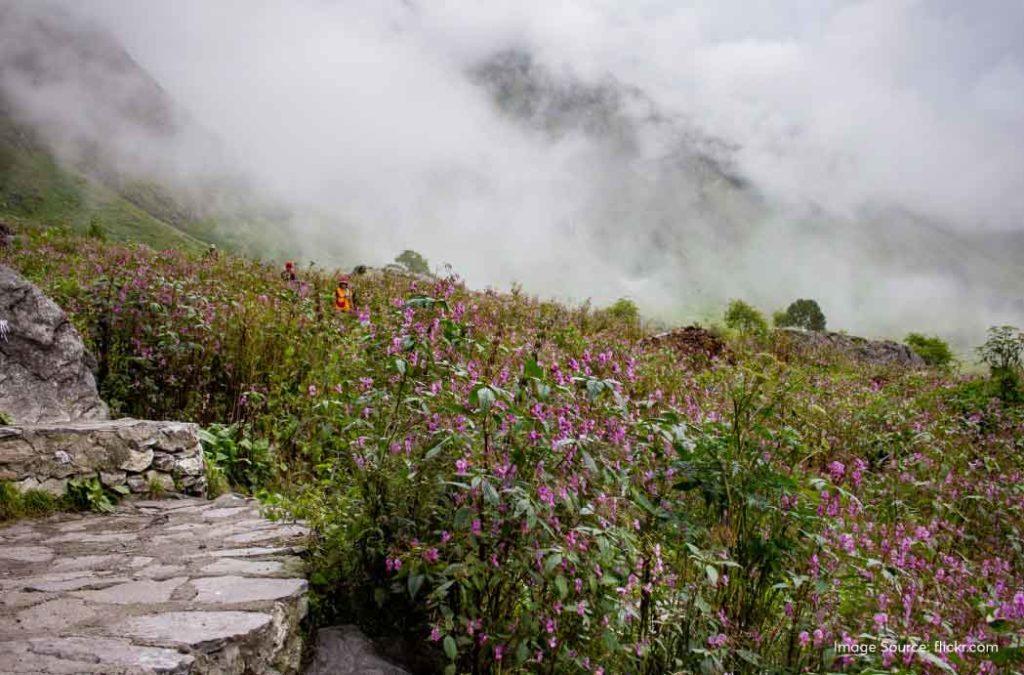
After all, you would love to witness a full blue with a vast array of vibrant hues. The temperature ranges between 13°C and 20°C, thereby inviting a pleasant atmosphere. It is recommended to carry warm clothing as the temperature can drop during the night. As it is the monsoon season, do carry rain jackets. You might experience occasional rain showers turning the valley into a splendid location with the aroma of wet mud.
You can also visit in the early days of June or in the month of October. However, the blooming is comparatively less during these times. The valley remains closed from November to May as the region experiences heavy snowfall leading to clogged roads.
Things To Remember Before Opting for the Valley of Flowers Trek
- Always check the weather and climate conditions before opting for the Valley of Flowers trek. Many areas are prone to landslides; hence, you must check the conditions beforehand.
- Valley of Flowers is a UNESCO World Heritage Site, which is why you require a permit to enter the area. The permit office is available right outside the valley.
- You are not allowed to stay for an overnight journey in the Valley of Flowers. Hence, you have to compulsorily descend to Govindghat or Ghangaria.
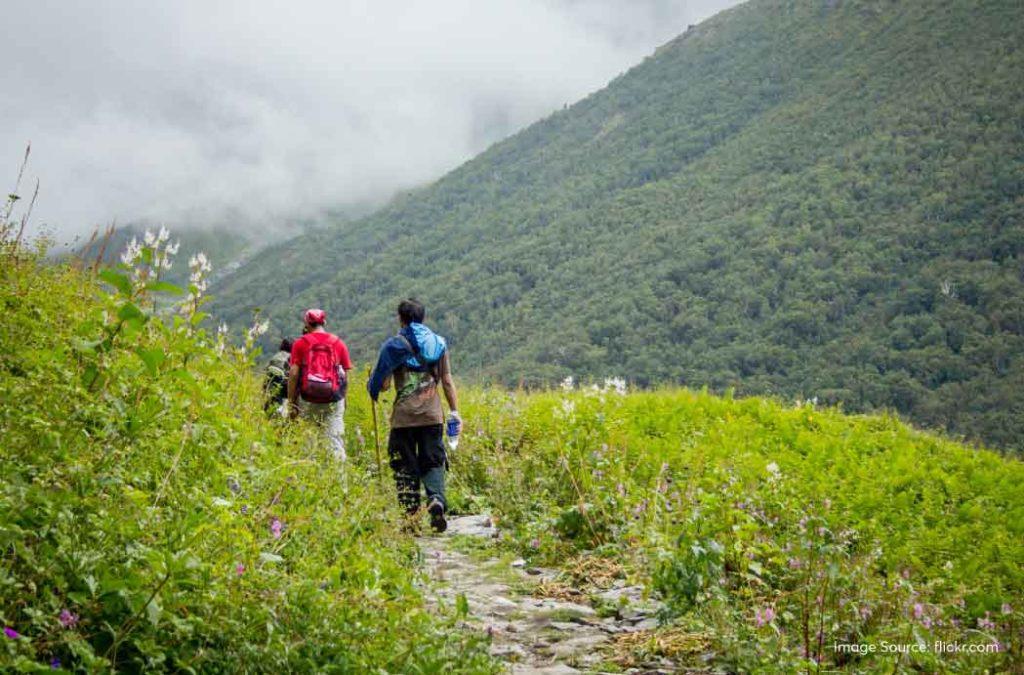
- It is best to arrange for your accommodation beforehand to avoid last-minute hassle.
- The trek is moderate, however it requires a good fitness level. Regular cardio and strength training is recommended.
- Avoid carrying plastic bottles, as you need to register the number of bottles before entering the divine area.
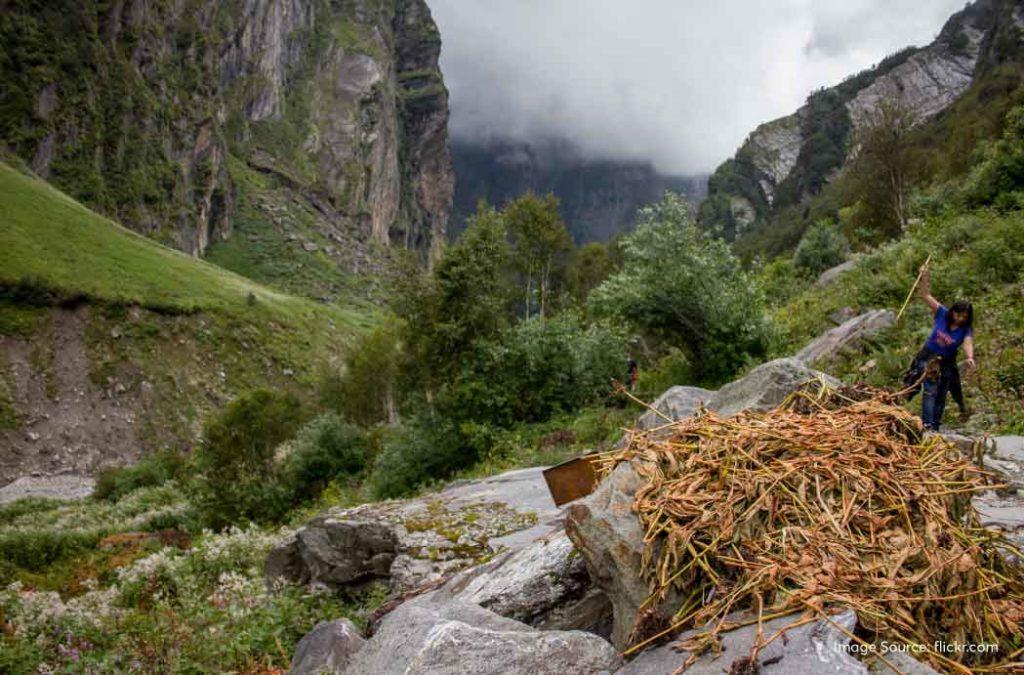
- Be cautious while moving around, and do not damage flowers on your way. Also, it is not recommended to pluck flowers, it may invite attention of the forest officials. Even though they are in abundance, plucking them disturbs the vegetation. Be responsible towards the environment.
- Start your trek early to avoid crowds and ensure you return to Ghangaria by 5 Pm.
- Mobile connectivity is literally zero in the valley, so plan your journey accordingly.
Essential Things To Carry for the Valley of Flowers Trek
- Trekking shoes
- Quick-dry t-shirts
- Warm jackets or thermals
- Waterproof jacket
- Woollen gloves and socks
- Sunglasses
- Backpack (40-50 liters)
- Rain cover for backpack
- Trekking pole
- Water bottle (2 liters)
- Water purification tablets
- Torch
- First aid kit
- Energy bars
- Dry fruits
- Travel insurance
- Identity proof
- Power bank
Pack Your Bag for the Valley of Flowers Trek!
Isn’t it amazing when you can walk on a canvas literally painted by nature? The Valley of Flowers trek is a one-time thrilling expedition taking you through some scenic trails, wildflowers and magnificent mountains.
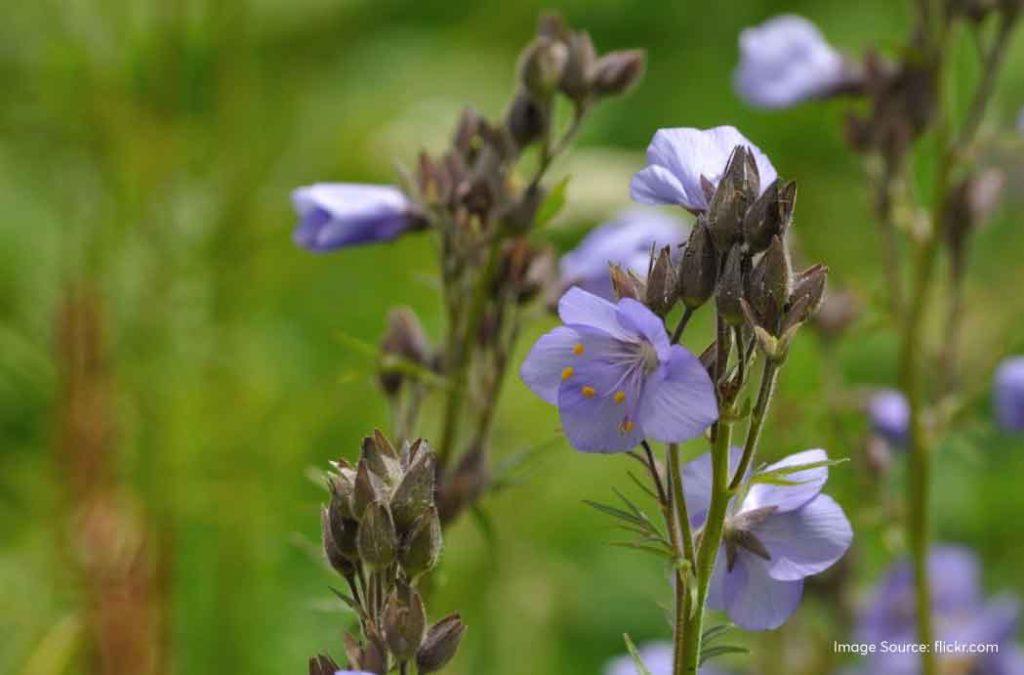
Being home to several species of flora and fauna, the mythological touch adds to the mystique of this beautiful place. As you embrace your journey to witness the delicate wilderness, make sure to capture multiple pictures. After all, you would literally be touching the land that remains untouched by several wanderers.







